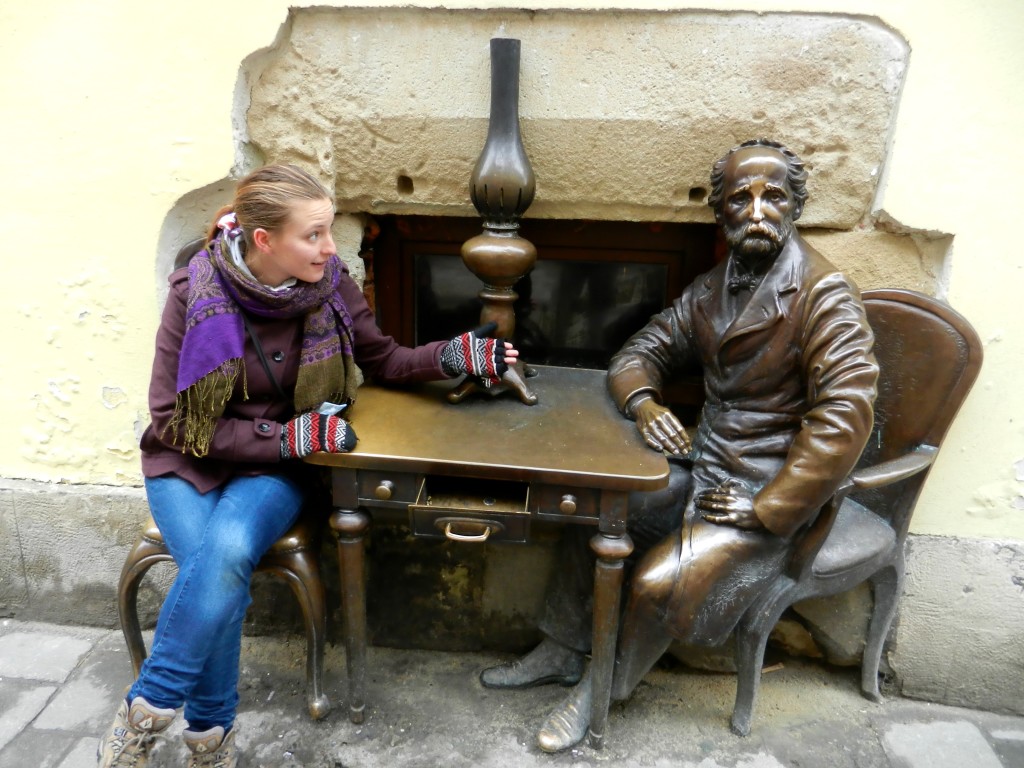
It’s always fun to take pictures with random sculptures, especially when they seem to invite people to pose with them. Who could resist this guy? No one wants to sit alone! Lviv is a fun, quirky little city with a charming, cobblestone heart. It’s hard not to fall in love with a city where you’re stumbling across surprising, little treasures, like this guy, around every corner.
Lets start off with one of my favourite spots: the Lviv Chocolate Factory. That’s right. You thought it would be something beautiful or historical, but it’s CHOCOLATE that makes the biggest impression! The scent of handmade, fresh chocolate wafts through this Willy Wonka-esque building with multiple floors of workshops, cafes, and stores where you can stock up on all your cocoa needs. The cafe serves a hot cocoa that is, quite literally, a cup of thick, melted chocolate. Too decadent, you say? It was HEAVEN. My favourite of their wide selection of individual pieces of paradise was the “Coffee Fun“, a creamy, coffee chocolate topped with an espresso bean. So, as everyone else in the city will tell you, don’t forget to visit Lviv’s chocolate shop!
Now that all you can think about is chocolate, I want you to forget all about it and picture my favourite part of the city, Ploshcha Rynok (Market Square). The first time we visited Lviv’s square (after our crazy train adventure from Slovakia) there was a Christmas market and a skating rink surrounded with merriment, mulled wine, and mistletoe. A few weeks later we were back, the snow had melted and this time the smell of coffee and baked goods was drifting from the cafes that lined the square. Old town Lviv was declared a UNESCO site in 1998, and the city has worked hard to repair and maintain the combination of renaissance and rococo-style, medieval buildings. The architecture of each structure is unique but also designed to harmonize together as a whole. Grab a coffee and some poppyseed pampushky, then take a stroll around the Market Square to enjoy the 40-odd buildings (including the Black Mansion) and monuments that ring the central Town Hall.
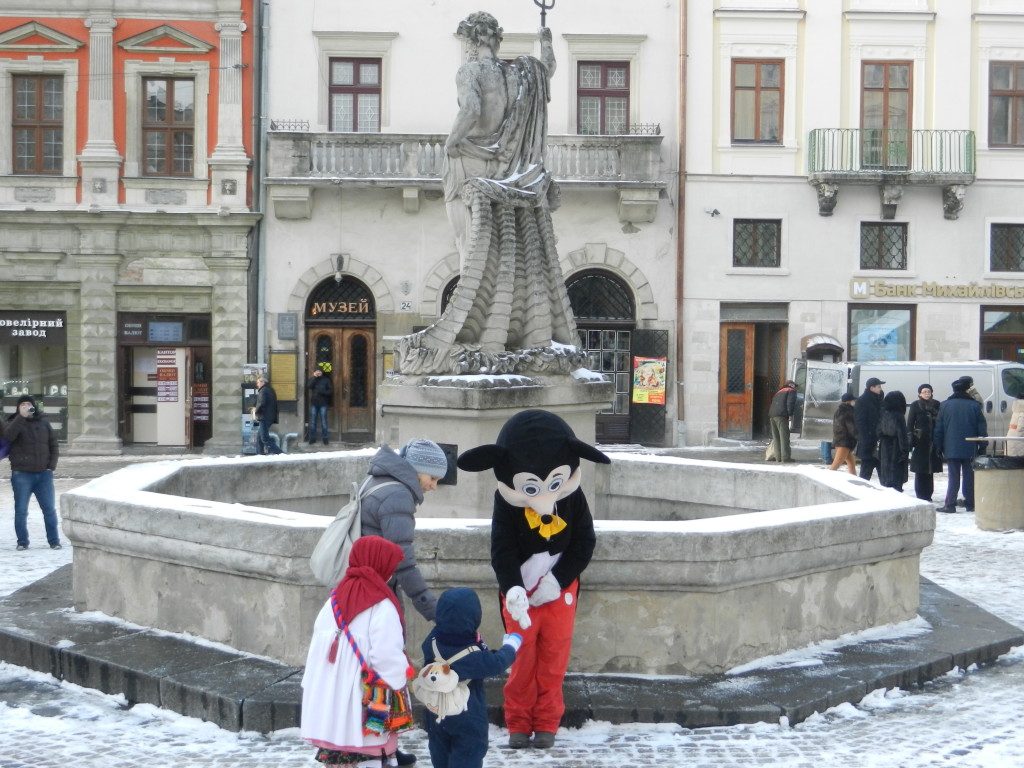
The streets of the city centre are full of treasures waiting to be discovered. Just over from Ploshcha Rynok is one of the oldest communities in Lviv: Virmens’ka, the Armenian quarter. The Armenians originally immigrated to the Ukraine, in the mid-13th century, when the Mongol-Tartar invasion forced them from their homes. In the middle of the community we stumbled across a small cathedral unlike any we’d seen yet.
The Armenian Cathedral of the Assumption of Mary was home to the Armenian Catholic Archdiocese of Lviv until the last administrator and priests were arrested by the Soviets in 1945. Today it has been reconsecrated and people may come to worship once again.
First entering the cathedral you’re hit by a shock of colour, but in a slightly more subdued sense than the blast you’re hit with when you walk into a Ukrainian Orthodox cathedral. The designs are distinctly Eastern (obviously, it’s Armenian after all) and the patterns have a similar, mesmerizing quality we found in many of the mosques we visited in Turkey. Khachkars, Armenian cross-stones, date close to when the cathedral was constructed in the 14th century, while other, more modern paintings and mosaics are from the 20th. The paintings… Well, they were a bit spooky to be honest. There’s one depicting John the Baptist’s head on a platter, while another eerily layers ethereal outlines over a funeral procession.
Since Lviv hosts more than its fair share of tourists, I often found myself wandering into countless souvenir shops filled with embroidered blouses, carved dolls, and replicas of medieval weapons. My favourite places to visit were the shops specializing in traditional linens and costumes, looking so enchanting hanging in the shop windows. It was hard to escape (and to resist) the textiles and handicrafts that Ukraine is so famous for.
In markets, artisan workshops, and even on the streets you’ll find beautifully embroidered shirts, dresses, and clothes showcasing traditional designs from all over Ukraine. Different regions of Ukraine have differing traditional designs, and for me it’s hard to choose a favourite because I am so in love with textiles in general. The same goes with what is probably Ukraine’s most well-known, decorative handicraft: pysanka, or painted eggs. Ukrainians traditionally used the batik method of creating the designs in beeswax, which resists the dyes and creates the lighter coloured patterns that decorate the egg. You can find real, blown-out shells delicately stacked in most shops, but you can also find the more backpacker-friendly, wooden versions. You can find dyed or painted versions of the wooden eggs, and they’re so lovely that I couldn’t resist picking out a couple to remind me of our time in Ukraine.
Ukraine is full of a rich, cultural history, more diverse than I ever realized, and Lviv is a perfect example of that. It’s such a lovely city, filled with fun discoveries around time-worn corners, tasty treats, and traditions that are holding strong. From the colourful buildings lining Market Square, to the humbling atmosphere within the Armenian cathedral, Lviv has something for everyone and invites you in. When you find yourself in Ukraine, don’t hesitate to accept Lviv’s invitation, you won’t be disappointed!
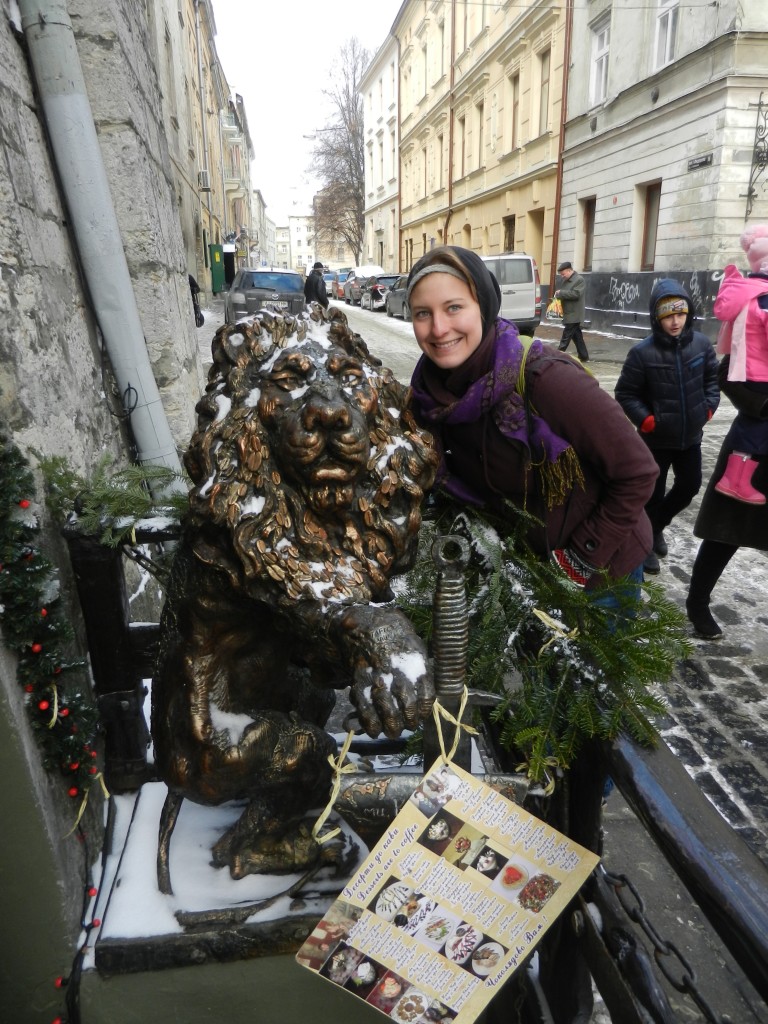




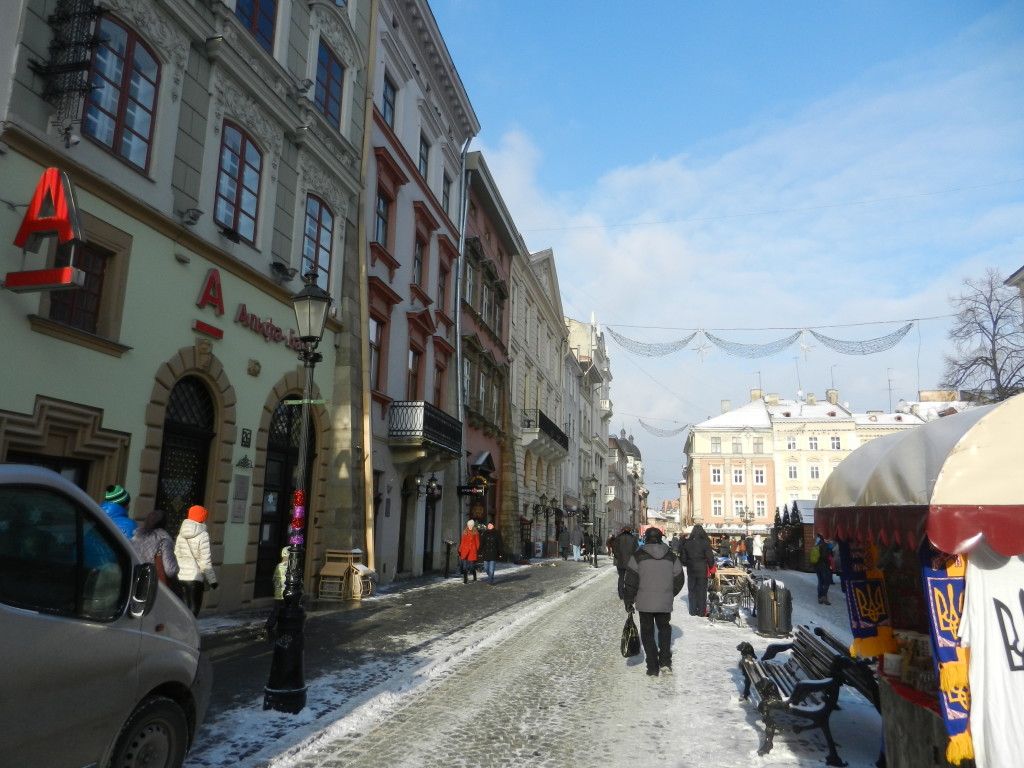




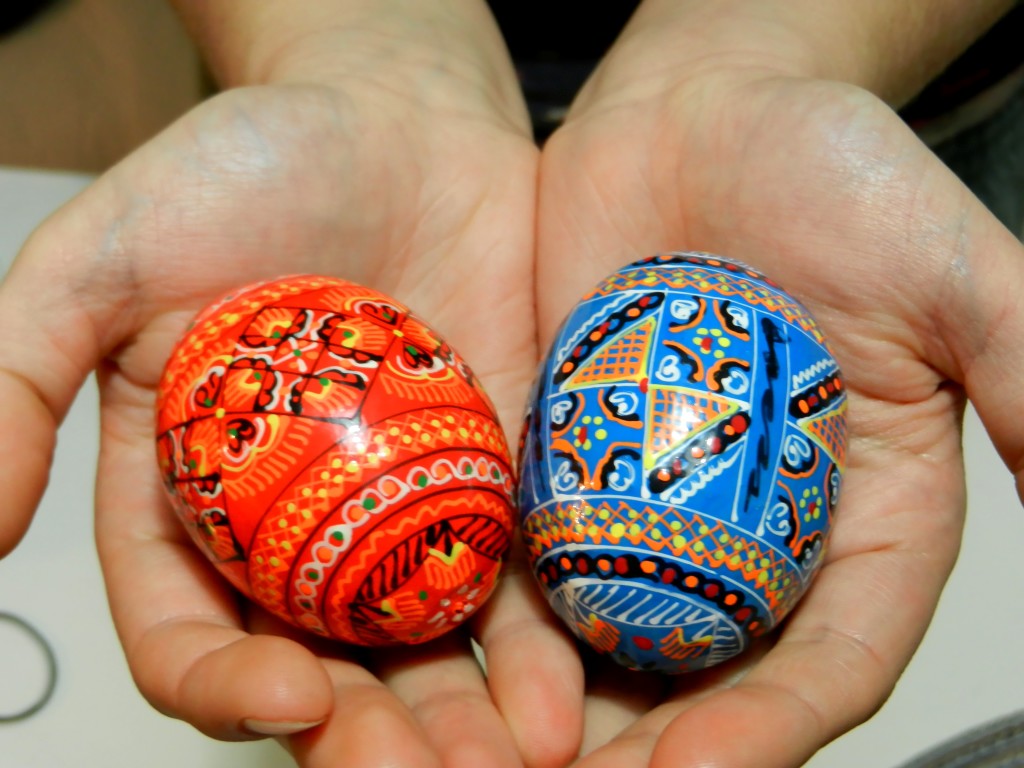
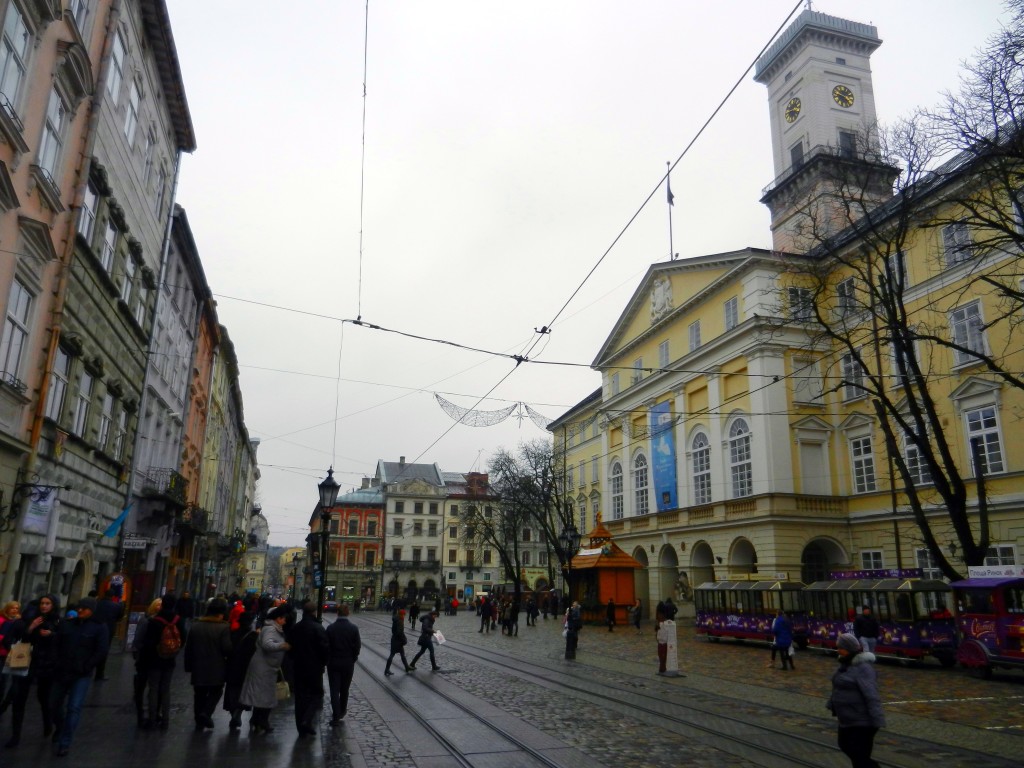
Wow looks like an amazing time your both having… Never having been to Europe I am surprised that they spend so much on churches and such with such a poor economy… Looks like the people are truly interesting and your stories say so much.. Keep up the writing
We were surprised too… often on our way through the country we would pass tiny villages with their own giant, golden-domed church amidst not-so-great infrastructure. It just goes to show the importance of religion among the Ukrainian people.